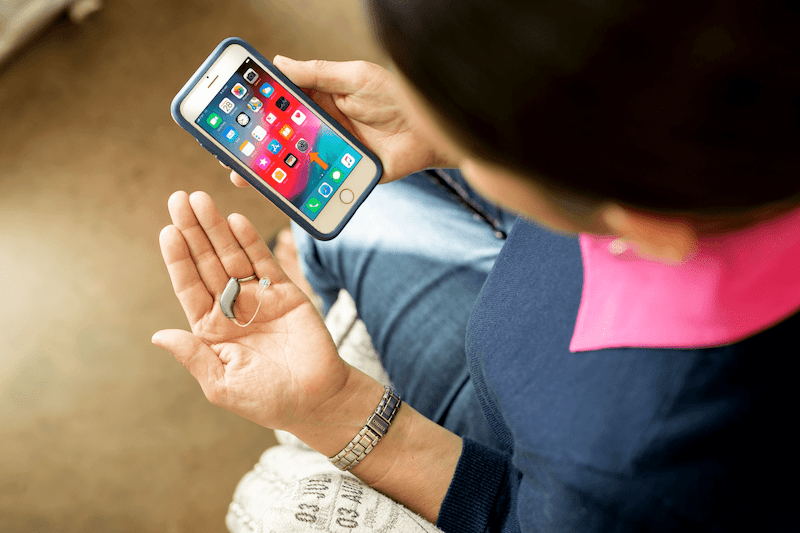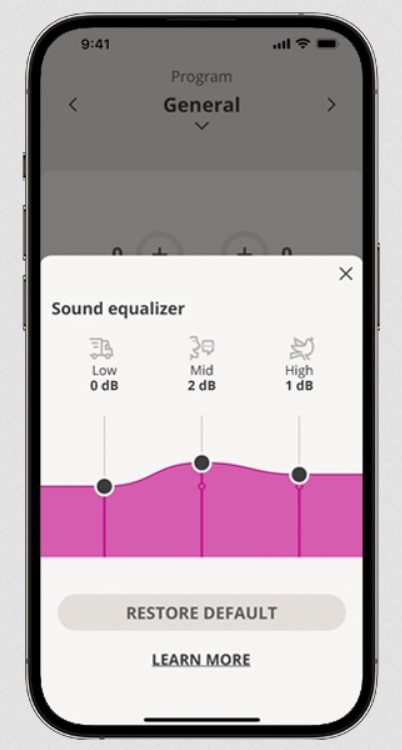|
www.HealthyHearing.com |
Why you should use your hearing aid smartphone app
Contributed by Madeleine Burry Doorbells, washing machines, refrigerators, and sound systems have smartphone apps these days. So it should come as no surprise that many hearing aids also have apps. Hearing aid apps by manufacturerThrough Bluetooth, these apps connect with the hearing aids a person is wearing, and are generally available on both Apple and Android phones:

apps to give users more control over their devices. Why use a hearing aid app?They offer a wide range of useful features, and perhaps most importantly, hearing aid apps help people who wear the devices to personalize their experience, which can be deeply empowering, says Shannon Basham, AuD, senior director of audiology and education at Sonova, which makes hearing aid solutions, including a hearing aid app. “Every single person who needs a hearing aid, their hearing loss and their communication needs are so individualized,” she noted. Apps allow people to tailor their listening experience, instead of trying to fit into a cookie-cutter situation, she says. What features are available through apps?Different apps offer different features, of course. But some of the features you can expect to see on many hearing aid apps include the following: 1. You can adjust your hearing aid discreetlyIf you want the flexibility to adjust the volume, treble, bass, and so on, you can do so through your smartphone. This means there's no need to reach up to your ear to manually push buttons. Doing this, Basham says, is analogous to adjusting your stereo settings. lets you customize your settings. 2. You can create and save personalized hearing programsFor instance, if you often find hearing in a particular cafe particularly challenging, you can adjust the levels to suit your hearing, and then save it so that you can use it again the next time you’re in that environment. Some hearing aids may come with baked-in programs from your hearing care provider, as well as ones designed to mask tinnitus. One of the most popular settings is a music program but you can also ask your hearing care provider for many different custom hearing aid settings. 3. You can check the device’s statusApps often allow you to check on the battery life of your hearing aids—that way, you’ll know when they need to be recharged or replaced. Apps often provide statistics—so you can see, for instance, how many hours you’ve had the hearing aids on per day/week/month. 4. You can locate your lost hearing aidsNot sure where you left your hearing aids? Or did one fall out while you were out and about? Many apps also offer a “find my hearing aid” type feature to locate the device. 5. Your hearing aids can connect directly to audioWith apps, you can connect directly to audio sources, so you can stream music and TV, along with phone calls, straight to your hearing aids. 6. You can review instructions and the manualIf you’re new to your hearing aids, the apps can help steer you through basic functionality—handy if you happen to need to look up how to change the batteries when you’re far from home. 7. You can keep a hearing journalDuring check-ins, your audiologist will ask you to share about times when your hearing aid didn’t help you to your satisfaction. But remembering—and describing—these moments can be tricky. Some apps offer the ability to keep notes, so you can pinpoint the situations where you weren’t able to hear. “These apps allow us to get a snapshot in time of the user experience,” Basham says. This information, in turn, can be passed along to the hearing aid professional—so that instead of verbally describing the sounds of the restaurant, the audiologist can more fully understand the soundscape. 8. You can communicate with your audiologist or hearing care professionalThrough the app, your hearing care provider can do a hearing test, adjust hearing aids, fit the hearing aid, and so much more, says Basham. “It’s really phenomenal during this period where people can’t be physically present for appointments,” she says. And there’s so much more that will come in future upgrades of apps. Just as hearing aids have made leaps forward in functionality, so too will the apps. “With regard to hearing aid tech we’re just scratching the surface of what is possible,” Basham says. Other hearing loss apps you may enjoyWe've rounded up apps in several hearing categories to help you make the most of your smartphone or tablet.
Madeleine Burry
|
Featured clinics near me
Earzlink Hearing Care - Reynoldsburg
7668 Slate Ridge Blvd
Reynoldsburg, OH 43068

Find a clinic
Need a hearing test but not sure which clinic to choose?
Call 1-877-872-7165 for help setting up a hearing test appointment.



 Madeleine Burry is a Brooklyn-based freelance writer and editor. She's written about health for several online publications, including Women's Health, Prevention, Health, Livestrong and Good Housekeeping. You can follow her on Twitter @lovelanewest.
Madeleine Burry is a Brooklyn-based freelance writer and editor. She's written about health for several online publications, including Women's Health, Prevention, Health, Livestrong and Good Housekeeping. You can follow her on Twitter @lovelanewest.